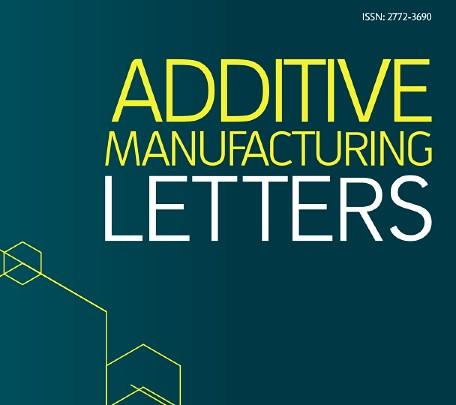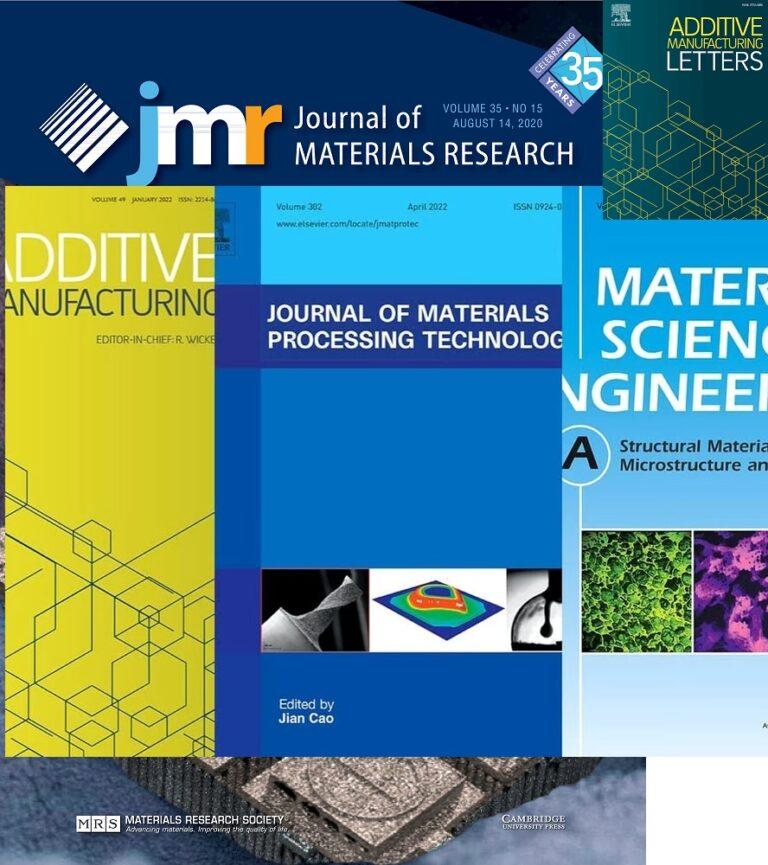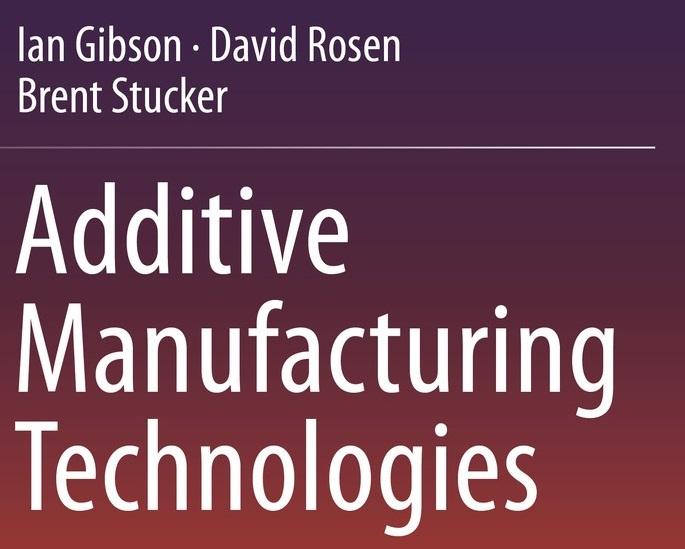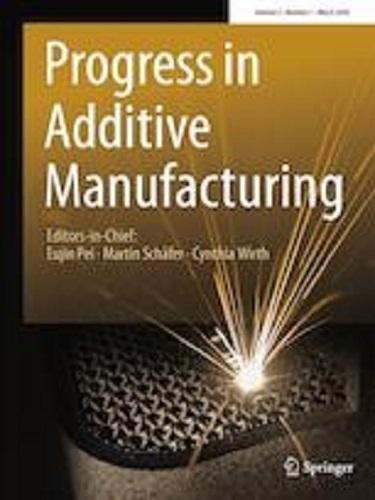Introduction
More than just a publication, “Additive Manufacturing Letters” serves as a powerful forum for influencing the development of 3D printing technology. The purpose of this paper is to analyze its significance and shed light on its place in the dynamic world of additive manufacturing.
“Additive Manufacturing Letters” was started with a strong commitment to advancing 3D printing research and development, and it has become a haven for both experts and fans. It is producing ground-breaking insights and encouraging innovation in the field of additive manufacturing despite the quickly evolving technology context.
The publication has played a crucial role in the spread of 3D printing technologies from its early days to its current prominence. It supports a varied community of thought leaders, inventors, and visionaries and acts as a productive environment for cutting-edge research. This creates a fertile platform for ideas, stimulating discussions that might expand our understanding of additive manufacturing.
We shall examine the past, present, and potential future of “Additive Manufacturing Letters” in this article. We’ll look into its main points, its contributions to research and development, and how it’s influencing 3D printing in the future. We hope that by the time we’re done, you’ll have a better knowledge of this exceptional publication and its tremendous influence on additive manufacturing.
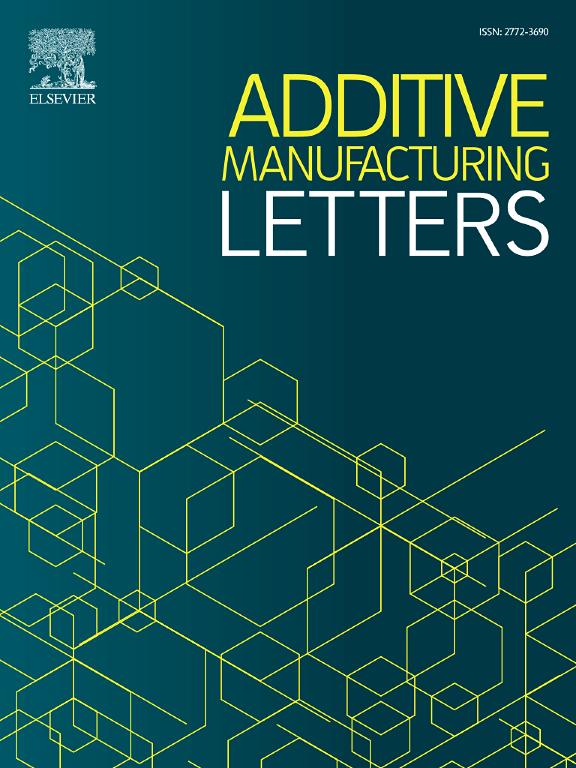
Background and History of AM Letters
The story of “Additive Manufacturing Letters” begins with a clear vision: to create a platform dedicated to enhancing our understanding and implementation of 3D printing technology. This goal was born out of the founders’ recognition of the potential held by additive manufacturing—a field teeming with innovation and future possibilities.
From its inception, the journal’s objective has been twofold. Firstly, to present groundbreaking research, promoting innovation in 3D printing. Secondly, to foster a community where scholars, industry professionals, and enthusiasts could engage in enlightening discourse.
Since its launch, “Additive Manufacturing Letters” has seen steady growth, both in terms of its readership and its influence. Its reach has expanded globally, attracting contributors from diverse fields. This has, in turn, amplified the depth and breadth of topics covered.
“Additive Manufacturing Letters” continues to rise in prestige. The journal’s growth reflects the wider growth of the 3D printing sector itself. With each new edition, it further cements its reputation as a leading source of knowledge in the additive manufacturing landscape.
Looking back, it’s clear that the journal’s original goals have been achieved, and surpassed. It stands as a testament to the unwavering commitment of its founders and the transformative power of additive manufacturing technology. Going forward, “Additive Manufacturing Letters” is poised to remain a significant player, contributing to the ongoing evolution of the 3D printing industry.
Key Topics Covered in ‘Additive Manufacturing Letters’
“Additive Manufacturing Letters” provides a vibrant platform for cutting-edge research in the realm of additive manufacturing. This highly selective, peer-reviewed journal caters to the fast-paced dynamics of the industry by offering a rapid time-to-first-decision on short-format manuscripts.
Key themes span an impressive scope within additive manufacturing, as defined by the ISO/ASTM 52900 standards. At its heart, the journal seeks to feature early-stage, emerging, and ground-breaking research that pushes the boundaries of conventional understanding.
Manuscripts delve into areas such as advancements in additive manufacturing processes, innovative designs for complex geometries, and multi-material structures. They also highlight research around lattice or cellular structures, topology optimization, and active structures.
In terms of materials, the journal showcases novel high-performance material systems, including innovative meta-materials, multiple materials in one process, and novel materials themselves.
Embracing the digital revolution, “Additive Manufacturing Letters” encourages submissions around simulation and modeling, non-destructive evaluation, and the creation of functional 3D structures with embedded electronics, sensors, or energy storage.
Moreover, the journal appreciates a cross-disciplinary approach by welcoming research on hybrid manufacturing, which combines both additive and conventional manufacturing.
Specific industry applications, such as in the biomedical, aerospace, and various industrial sectors, underline the practical relevance of the research. Lastly, the journal provides a home for focused literature reviews, offering short overviews of emerging topics in the additive manufacturing field.
In summary, “Additive Manufacturing Letters” serves as a melting pot of ideas, sparking discourse, and fostering innovation across a wide spectrum of topics within the additive manufacturing industry.
Case studies or examples of impactful articles
“Additive Manufacturing Letters” has been home to numerous influential studies that have shaped the field. Below are some notable examples from the past 90 days and the last three years.
Recently, “In-situ microstructure control by laser post-exposure treatment during laser powder-bed fusion” by Mahyar Hasanabadi and Ehsan Toyserkani caught the attention of many. This work shed light on advanced in-situ control mechanisms in additive manufacturing. Equally influential was “Detecting missing struts in metallic micro-lattices using high speed melt pool thermal monitoring” by Jean-Baptiste Forien and Nicholas P. Calta. This research represented a significant leap in quality control techniques for complex 3D-printed structures.
Looking back, one cannot overlook “Manufacturing single crystals of pure nickel via selective laser melting with a flat-top laser beam” by Dennis Edgard Jodi and Makoto Watanabe. This paper made waves with its ground-breaking technique to manufacture high-quality nickel single crystals. Another standout piece was “Hybrid additive robotic workcell for autonomous fabrication of mechatronic systems – A case study of drone fabrication” by Tadeusz Kosmal and Christopher Williams. Their study showcased the potential of hybrid additive manufacturing in autonomous systems, presenting a practical case of drone fabrication.
Overall, these papers underscore the breadth and depth of research facilitated by “Additive Manufacturing Letters”. They serve as prime examples of the journal’s contribution to the advancement of additive manufacturing, encompassing diverse topics from novel fabrication processes to innovative applications.
Role of ‘Additive Manufacturing Letters’ in the 3D Printing Industry
“Additive Manufacturing Letters” plays a pivotal role in the 3D printing industry. Its position as a leading source of innovative research and analysis lends it a powerful influence within the field. The journal sets the stage for pioneering ideas and advancements, shaping the future of 3D printing.
The journal’s influence is multifaceted. Firstly, by publishing cutting-edge research, it disseminates novel findings and methods to the wider industry. This sharing of knowledge sparks further innovation, fostering a robust and dynamic 3D printing community.
Moreover, its rapid review and publishing cycle enable timely communication of advances. This speed plays a crucial role in an industry characterized by rapid growth and change, ensuring that new techniques and understandings can be implemented swiftly.
In addition, “Additive Manufacturing Letters” inspires advancements by setting high standards for research. Its selective approach ensures that only the most impactful, well-executed studies are showcased, pushing researchers to strive for excellence in their work. This drive for quality contributes to the overall progress in 3D printing.
The journal also embraces a broad spectrum of topics, thereby fostering a cross-disciplinary approach. By covering advances in design, materials, processes, and applications, it encourages researchers to explore interconnections and novel ideas, promoting the evolution of 3D printing.
In conclusion, “Additive Manufacturing Letters” serves as a cornerstone in the 3D printing industry. Through the dissemination of innovative research, fostering quality, and encouraging cross-disciplinary exploration, the journal plays a key role in advancing the industry.
Contributions of ‘Additive Manufacturing Letters’ to Research and Development
“Additive Manufacturing Letters” makes invaluable contributions to research and development within the additive manufacturing industry. Its role is multifaceted, serving as both a repository of knowledge and a platform for showcasing new findings.
The journal’s first significant contribution lies in its provision of rigorous, peer-reviewed research. This wealth of accessible knowledge acts as a springboard for further investigation and application in the field, enabling the swift progression of additive manufacturing technologies. Researchers can learn from each other’s work, avoiding pitfalls and building on successes.
Moreover, “Additive Manufacturing Letters” has a defining role in promoting novel methods, materials, and applications in 3D printing. By publishing ground-breaking research, the journal ensures that innovative ideas quickly reach a broad audience. This dissemination not only fosters innovation but also encourages swift adoption of new techniques and applications.
“Additive Manufacturing Letters” also leads in the promotion of cross-disciplinary research. By publishing articles across a wide range of topics, the journal fosters connections between different areas of study. These interactions can ignite fresh perspectives and ideas, further driving innovation in additive manufacturing.
Finally, the journal’s rapid publication cycle ensures timely communication of developments. This speed is particularly crucial in a fast-paced field like additive manufacturing, where swift knowledge sharing can drastically impact technological advancement.
In summary, “Additive Manufacturing Letters” is a driving force in the additive manufacturing industry’s research and development, accelerating innovation and broadening understanding through its timely and wide-ranging publications.
Future Perspectives: How ‘Additive Manufacturing Letters’ Shapes the 3D Printing Landscape?
“Additive Manufacturing Letters” stands at the precipice of the future, playing an influential role in molding the landscape of 3D printing. The journal’s distinctive focus on early-stage and ground-breaking research places it at the forefront of technological innovation, acting as a conduit between pioneering research and the broader industry.
Looking forward, the journal will continue to shape the 3D printing landscape through its dissemination of novel research. This includes emerging topics like advanced additive manufacturing processes, complex geometrical designs, multi-material structures, and the use of novel, high-performance material systems. These areas not only shape current research but also hint at future directions and possibilities.
For instance, additive manufacturing’s potential in creating intricate multi-material structures opens the door to significant advancements in numerous sectors, from aerospace to biomedical. The journal will play a pivotal role in such developments by offering a platform for researchers to share their findings and inspire further innovation.
Similarly, the journal’s exploration of new high-performance material systems, including novel materials and meta-materials, could revolutionize the industry. Such advances could lead to stronger, lighter, and more adaptable products, which could have widespread impacts across various sectors.
The journal’s focus on simulation, modeling, and nondestructive evaluation also predicts a future where additive manufacturing processes become even more efficient and accurate. These areas of study will contribute to the continual refinement of 3D printing technologies.
In a nutshell, “Additive Manufacturing Letters” will continue to significantly shape the future of 3D printing. Through its focus on cutting-edge research and cross-disciplinary approach, the journal will facilitate the discovery and implementation of game-changing technologies in additive manufacturing. Its impact is vast and will undoubtedly steer the industry towards an innovative, dynamic, and promising future.
Conclusion
In conclusion, “Additive Manufacturing Letters” holds a pivotal role in the additive manufacturing sector. The journal stands out as a beacon for early-stage, groundbreaking research in the industry, thereby facilitating innovation and advancement in 3D printing. Its impact, from aiding the dissemination of novel processes and materials to encouraging cross-disciplinary research, is significant.
The journal’s commitment to rapid decision-making ensures that cutting-edge research reaches the scientific community swiftly, encouraging quick implementation of novel ideas. It also contributes to the growth and development of the industry by publishing a wide array of topics, promoting a holistic approach towards understanding and advancing additive manufacturing.
By showcasing impactful articles, “Additive Manufacturing Letters” has demonstrated its ability to be a conduit for influential research. The journal plays a critical role in the evolution of additive manufacturing, from its influence on industry practices to its impact on research and development.
Looking ahead, the journal is set to shape the future of 3D printing through its commitment to emerging topics. Its focus on novel methods, materials, and applications will be a key driving force in the future evolution of the additive manufacturing landscape.
In essence, “Additive Manufacturing Letters” is not just a scientific journal, but a pivotal piece in the additive manufacturing ecosystem, driving innovation, promoting research, and shaping the future of 3D printing.
How to Follow the Guidelines for Writing in “Additive Manufacturing Letters”?
Here are the steps to follow the guidelines for writing in “Additive Manufacturing Letters”:
- Prepare Your Manuscript
Ensure your manuscript is well-written, spell-checked, and grammar-checked. Write in third-person and structure your paper to include subsections: Introduction, Method and Materials, Results and Discussion, and Conclusions. Keep the word count below 5000 words.
- Include Necessary Information
Provide keywords, figures with captions, and tables with titles, descriptions, and footnotes. Confirm all figure and table citations in the text match the files provided. Specify if any figures should be in color.
- Adhere to Citation Guidelines
Ensure all references in the Reference List are cited in the text, and vice versa. Keep self-citations below 20%, and make sure at least 25% of citations are from the last 3 years.
- Follow Standard Terminology
Adhere to the ISO/ASTM 52900 standard terminology for the title and abstract. Any trademarked or non-standard terms should be defined in the introduction.
- Provide Experimental Details
Describe all necessary details for experiment reproducibility. Avoid citing previous work to describe these details.
- Use Inline Figures
Ensure all figures are inline with the text for better reviewability.
- Machine Learning Requirements
If you’re using machine learning, follow the journal’s Machine Learning Requirements and Guidelines.
- Author Information
Designate a corresponding author and provide their email address and full postal address.
- Submit Supplemental Files
Include Graphical Abstracts / Highlights files and supplemental files, if applicable.
- Final Check
Review all journal policies and make sure all necessary files are uploaded. Obtain permission for use of copyrighted material, and provide a competing interests statement.
Finally, prepare referee suggestions and contact details based on journal requirements, and then proceed to submission.
FAQs
“Additive Manufacturing Letters” is focused on publishing new research and findings in the field of 3D printing and additive manufacturing. It emphasizes sharing novel methods, innovative materials, and practical applications in the 3D printing industry.
You can submit your work by following the guidelines provided in the journal’s submission checklist. It details everything you need to include in your submission, from the manuscript with keywords and figures, to author details and references.
The preferred length of manuscripts is 5000 words excluding references. This is as reported by either iThenticate or Microsoft Word.
Yes, the journal accepts papers using Machine Learning, but they should follow the specific Machine Learning Requirements and Guidelines provided by the journal.
Yes, the journal specifies that references must contain no more than 20% self-citations and at least 25% of citations must be from the last 3 years.
Yes, the journal strictly adheres to the ISO/ASTM 52900 standard terminology for the title and abstract. Other trademarked or non-standard terms can be used but only after definition in the context of ISO/ASTM in the introduction. Also, writing in the third person is preferred in this journal.

